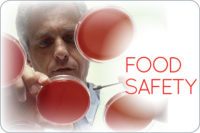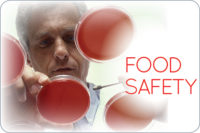A lot has changed since Upton Sinclair published his 1906 novel, “The Jungle.” During the last 100 years plus, we have advanced more technologically than the previous 10,000 years combined. We put a man on the moon and developed a vaccine for polio. We witnessed the arrival of the television, the Internet and communications at the speed of light. From the teddy bear to the hydrogen bomb, the Model T Ford to the Space Shuttle, the 20th century has brought profound change to every aspect of our existence.
The century’s most far-reaching change, however, came about as a result of dramatic improvements made to the quality, availability and safety of our food. These improvements gave rise to a revolution in the growth, health and lifespan of an entire nation.
Today, the United States enjoys the largest and safest food supply in the world. We freely pick and choose what to eat from enormous grocery stores whose aisles are lined with tens of thousands of products. Most of what we take for granted today, especially in the context of the availability of food, could not have been conceived of at the beginning of the 20th century.
The first “supermarket,” for example, did not open its doors until 1930. “Grocers,” at that time, sold only dry goods and non-perishables. They did so in stores that rarely occupied more than 1,000 square feet. Compare that to today’s massive grocery stores — some reaching an astonishing 250,000 square feet — which contain products from not just across the United States, but also from the farthest reaches of the planet.
The same holds true as it relates to meat. In the beginning of the century, if one wanted meat, they went to the butcher; just as, if they wanted bread, they went to the bakery; and so on. Today, consumers have almost limitless access to thousands of meat products. From classic steaks to boneless chickens, deli meats to pizza toppings, the options are nearly endless. And, the options are incredibly safe.
This did not occur by accident or as a matter of course. It took countless people working in tandem to build a better food supply. Scientists developed ways to grow more robust crops and healthier animals. Engineers designed ever safer and more efficient processing facilities and transportation infrastructures. Food producers, through hard work and research, instituted programs and protocols to further enrich and enhance the safety and shelf-life of food.
Through advents in meat-processing technology and food-safety interventions, including hide-on washes, steam vacuuming, carcass washes and steam pasteurization, the meat produced by industry has become incredibly safe and clean. Moving forward, industry will continue to work tirelessly alongside scientists and regulators to maximize the effectiveness of new interventions to make our food as safe as it can be.
And, with that understanding, I think it’s also safe to say that both new and existing antimicrobial sprays and washes should not only be embraced, but also viewed (at least at this moment in our history) as the icing on the cake.
Shawn K. Stevens defends and counsels meat companies in foodborne illness matters throughout the United States. Mr. Stevens also assists industry clients with regulatory compliance, recall planning, crisis management and other issues in advance of and following major food-product recalls. Additional information about his practice can be found at www.defendingfoodsafety.com.
Antimicrobials: Icing on the cake?







